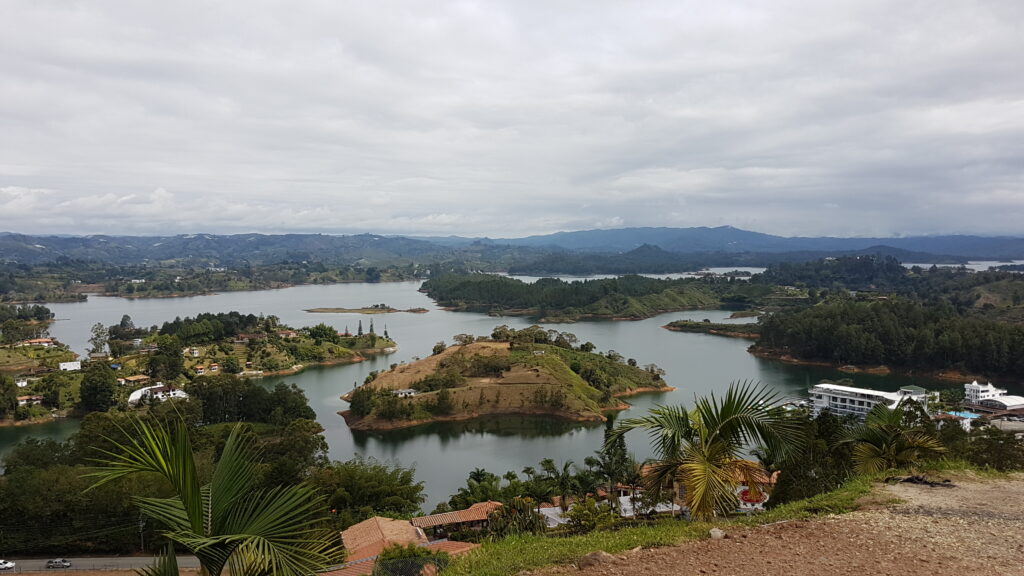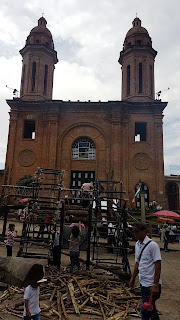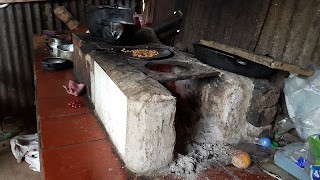Cartagena, Medellin, Santa Marta are the typical “most tourist invaded” places to visit in Colombia. Today I’ll take you off beaten path to discover life of lethargic, but full of colors granja. Learn history, a little bit of Spanish and other fun things while traveling in rural Colombia with me.

Day 1, Saturday, What is Campo?
My first introduction to countryside of Colombia happened to be in Puente Nacional in department Santander. The small colonial town which until today vigilantly guards national history on cobblestone streets, in people’s lives, and in ancient traditions. The place had played a historic role in Comunero Rebellion. I was lucky to visit this it on the weekend of the event celebration which I will describe in detail a little later.
Before the trip I’ve heard such words as ‘campo’ and ‘granja’ closely associated with province or countryside, although I didn’t really know the meaning behind it. The simple ‘farm’ translation doesn’t depict whole palette of colors, aromas, and experiences that hide behind these Spanish words. I’ve spent only 2 days here, so let me share with you excerpts from my diary.

“…Saturday has started with radiant, blinding sun that opened the day. Who could have guessed that the same evening will bring vigorous rain that seemed like the one from the Noah times. During the day I explored rustic farm that located 20 minutes away. To get there we drove on the “road” that can be described as “of the cliff, only in one direction, jungle style, pavement-less safari drive”. On the way I saw coffee plantations, surrounded by surreal greenery. Once we got to the farm, I got my hands wet washing horses, learning about growing/treating them and national horse-riding pride ‘paso fino’, which means ‘fine step’.
Paso fino
I was lucky to experience it firsthand on the horse or rather … on my buttocks. It is a special breed of horse (brought by Spaniards and evolved in its own unique way with time, thanks to mountainous interior of the country) and it is a specific way of riding horse.
“…paso fino is a collected gait with rapid footfalls that covers as little ground as possible.”
Wikipedia
After watching the video, it’ll be more evident why I regretted getting on the saddle and putting myself a string away from falling. Not to mention that there were hundreds, literally hundreds of horse riders not fully sober to say the least. Half a day whole town was parading on the streets and later in the evening testing each other in skills. People were drinking, speaking on the phone, smoking, yelling to other riders and doing it all while riding horses. On the top of that, as I mentioned earlier, it seemed like gods were angry with human festivities and were flushing down all water reserves. Pouring rain didn’t bother locals at all, who were warming up with aguardiente (cheap strong alcohol). Enough to say that after 15 minutes in desperate grasps for my life, I got wet till my toes, and was begging my host to help me land the mother Earth and stay on my two legs.
Day 2, Sunday, What is panela?
On Sunday people who survived the previous night were celebrating Comunero Revolt. It was a rebellion by locals in reaction to imposed taxes from Spain in 1781. I won’t bore you with history dates and names, leaving it at that and rather share Colombian love for panela – a sugarcane sweetness that is the national pride and used in coffees, teas, baked goods, as a candy and in many other ways. The production of the panela hasn’t changed over the centuries – big circular presses ground the row sugarcane into brown juice, which is being boiled in big pots till liquid thickens, then curious crowd can dip sugarcane sticks into the pot and enjoy the sweetness. The final product takes shape of putty. The joy of the people can be seen in their wide smiles, laughter and kid’s indulgence with panela.

On the second half of the day I picked, roasted, grounded, and brewed coffee beans. Yes, I did it all myself, yes, in the heart of Colombia! Beside this incredible experience I’ve seen greenery of the mounts, saw fruits grown in their natural habitat, got stuck in the middle of the night in SUV carrying two horses in the trailer, got all over in mud, but pulled that damned trailer (thankfully without horses) back to the farm, and overall had very relaxing, informative, exhausting experience in ‘granja’. Yes, now, I have an idea what locals mean by ‘campo’ and I hope you do too…”

For more information what other fun activities to do in Colombia see my latest post

